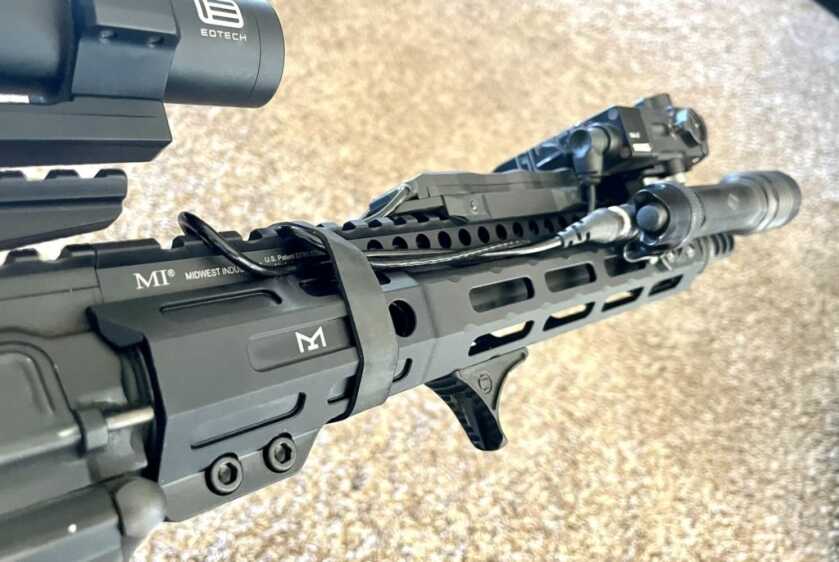
Midwest Industries recently announced their Night Fighter M-Lok rail which is geared toward Night Vision shooters. This rail is designed to be more rigid to reduce lasers’ point-of-impact shifts. By bulking up and keeping more 6061 aluminum in this rail compared to some of their previous options, the Night Fighter looks promising. Having a history of providing great products at affordable prices, I was immediately very interested in this new option.
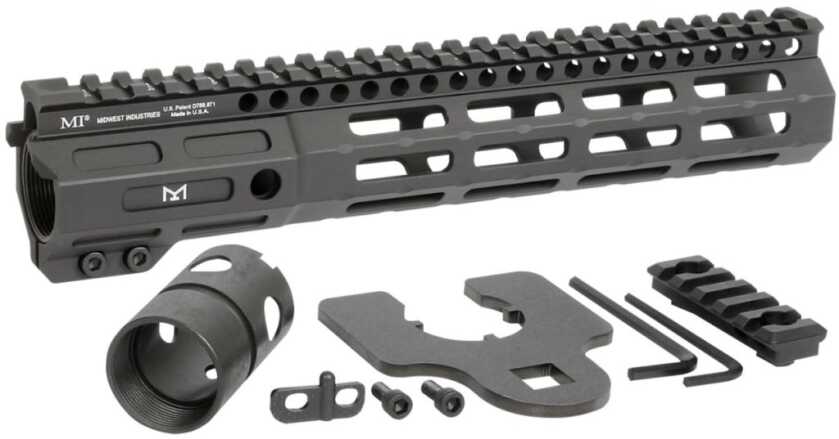
Listed below are some of the features unique to the Midwest Industries Night Fighter rail:
• Ultra-Rigid Design Made to Minimize Handguard Flex
• Made to reduce point of impact shift with popular lasers such as ATPIAL, DBAL, NGAL
• 4140 Steel Heat Treated Barrel Nut – 2.250” Long
• Barrel Nut and Wrench Included
• Features Patented 4140 Heat Treated Torque Plate
• 10.5” Top rail length
• 12.4 oz Installed Weight
• 6061 Aluminum Type III Hard Coat Anodized
• Continuous MIL-STD 1913 Picatinny Top rail
• Two Integral Anti-Rotation QD Sling Sockets
• Super Slim 1.5” Outside and 1.250” Inside Diameter
• Seven Sides of M-LOK
• 5-Slot Polymer M-LOK rail included
• Fully Dehorned and Deburred
• 100% Made in USA – Keeps America Working
• MI Lifetime Warranty
Comparing the new Night Fighter rail to my previous Midwest Industries Combat rail, there are many similarities and a few differences. The 10.5” Combat rail came in at 8.7 ounces with the barrel nut and hardware included while the Night Fighter rail comes in at 12.4 ounces, a 70% increase. This helps provide much-needed rigidity for maintaining zero with lasers or front sight posts attached to the end of the rail. The outside diameter of the rail remains the same slim 1.5″ profile, but the Night Fighter handguard has an inner diameter of 1.250” instead of the Combat rails 1.300.” This adds 0.05” in the average wall thickness for the Night Fighter rail.
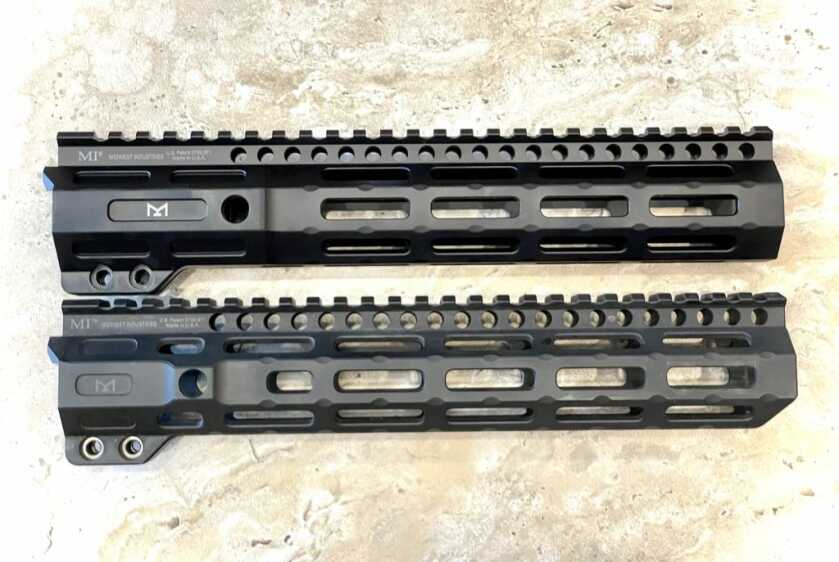
Just comparing the two rails, the combat rail alone weighed 6.7 ounces while the new Night Fighter rail came in at 8.7 ounces. Most of this reinforcement and weight comes from the aft-end of the rail which mounts around the barrel nut. Featuring a much longer barrel nut, the Night Fighter rail has considerably more rigidity than some other models out on the market. I believe this design is the key to success I have found with the Night Fighter rail.
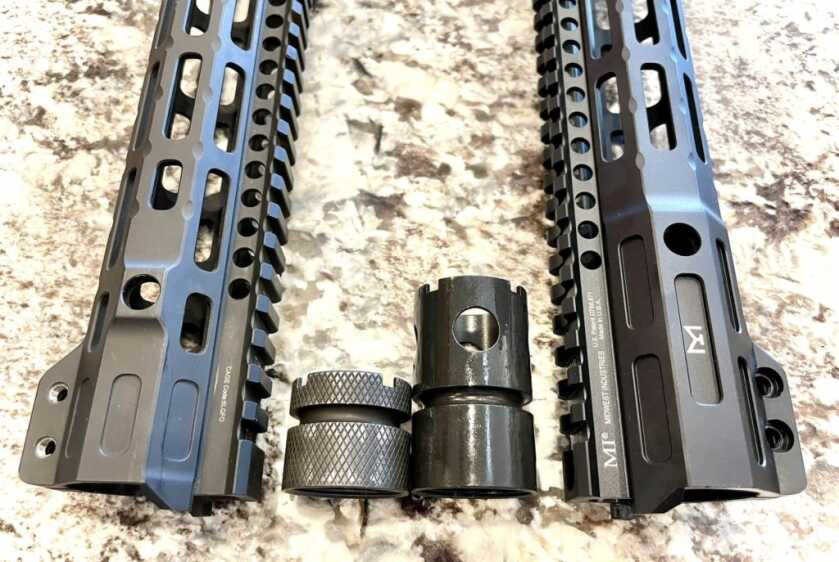
So now let’s get to the test. I couldn’t just take Midwest Industries at their word for producing a more rigid rail, I needed to see how much better it actually was. To test out rigidity, and Point of Impact (POI), I hung both 10 and 25lb weights from the end of the rail 4 different times and measured the laser deflection. Marking 4 locations on a sheet of paper as the position I would hold my crosshairs on, I would then have my lasers location also marked with a black sharpie while no weights were hung. Once I had this baseline, I would add 10lbs to the end of the Night Fighter rail to mark the deflection in relation to my optics zero, and then do the same with 25lbs. After this, I would then mark where the laser was at to see if there was any POI shift. 25lb-force is way more than anyone should ever be resting on their rail when firing, but I wanted to over-exaggerate the problem to get more scalable results. All measurements from these 4 intervals of measuring zero-adding 10 then 25lbs, then checking POI shift and repeating, are posted in the picture below. For this test which was conducted at 40 feet, I averaged 0.379″ of deflection or 2.71 MOA of deflection when hanging 10lbs from the end of the rail, and 1.085″ or 7.77 MOA of deflection when hanging 25lbs. Comparing these results to the Midwest Industries Combat rail, the Night fighter had nearly 30% less deflection using 25lbs (7.77 MOA vs 10.8 MOA) and also had much less point of impact shift from the laser.
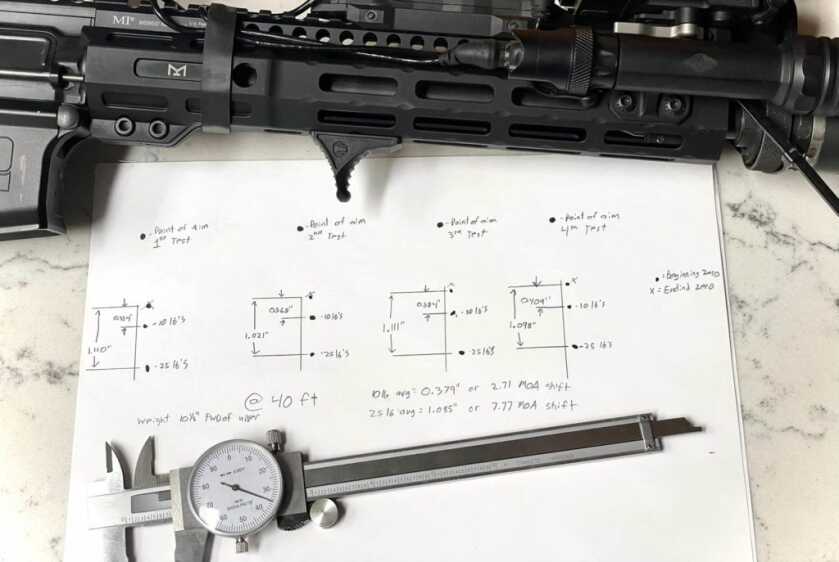
Results stayed very consistent compared to a previous test I did, and I believe this is the result of the rail not slipping around on the barrel nut. I also do not believe any of this testing is causing plastic or permanent deformation, so all POI shift is probably coming from the rail to barrel nut to upper mating assembly, which is very rigid with the Night Fighter rail. Errors should be accounted for and would include discrepancies in marking the center of the laser, and picking a spot to mark with small swaying in the beam from the weights. For just a few more ounces, this new rail is performing much better. Deflection is real though, and ways to minimize its effects would be to not push hard against the end of the rail on a barrier or other surface when using a laser to shoot. However, this rail performed great and should hold up to the task.
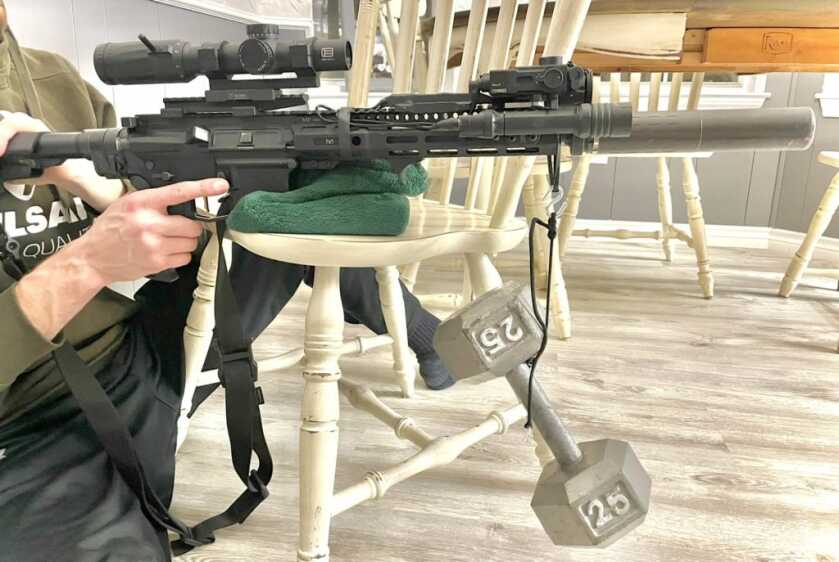
Now back to the features of this rail. Midwest utilizes seven-sided M-LOK locations, two integral anti-rotation QD sling sockets, and an ultra-rigid design to provide everything the end-user should need. The top of the rail uses continuous MIL-STD 1913 Picatinny sections and includes T-marks on every other space of these cuts. While I just use a pencil to mark my optics and lasers rail location, remembering the T-mark is still an option with the combat rail. Something unique to this rail is the circular grooves cut in these top Picatinny rail sections.

Midwest Industries provides the following video as instruction for how to install their Night Fighter rail:
Overall I am very impressed with the performance from this rail and for the price this is going to be a great option for a lot of people. The Night Fighter rail has an MSRP of $219.95 and you can read more about it or purchase it from Midwest Industries website by clicking HERE.

